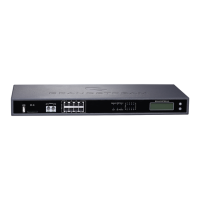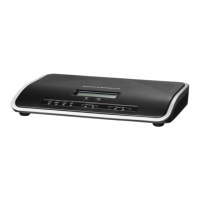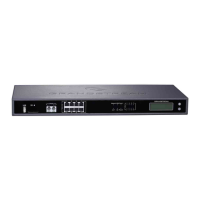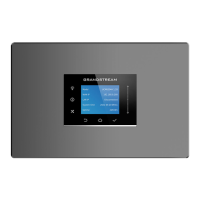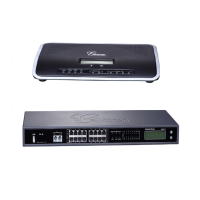P a g e | 232
UCM6510 IP PBX User Manual
Version 1.0.20.31
Inbound Rule Configurations
Table 70: Inbound Rule Configuration Parameters
Select the trunk to configure the inbound rule.
All patterns are prefixed with the "_".
Special characters:
X: Any Digit from 0-9.
Z: Any Digit from 1-9.
N: Any Digit from 2-9.
".": Wildcard. Match one or more characters.
"!": Wildcard. Match zero or more characters immediately.
Example: [12345-9] - Any digit from 1 to 9.
There are two pattern fields: Pattern and CallerID
Pattern. Pattern: Specifies the pattern that the dialed number must
satisfy to use the inbound route. Example: if the pattern is "_2xxx",
the dialed number must be a four-digit number that starts with 2 in
order for this route to be used.
CallerID Pattern: Specifies the CallerID pattern that callers must
satisfy to use the inbound route. Example: if the CallerID pattern is
"_1234", only callers with a CID of 1234 can use this route.
Notes:
Multiple patterns can be used. Each pattern should be entered in new
line.
Users can add comments to the end of patterns to better organize and
keep track of complex rules by typing “/*” and “*/” before and after each
comment respectively.
Example:
_X.
_NNXXNXXXXX /* 10-digit long distance */
_818X. /* Any number with leading 818 */
After creating the inbound route, users can choose to enable and disable it.
If the route is disabled, it will not take effect anymore. However, the route
settings will remain in UCM. Users can enable it again when it is needed.
Allowed to seamless transfer
Allows the selected extension to use this function. If an extension is busy,
and a mobile phone is bound to that extension, the mobile phone can pick
up calls to that extension.
Configure the Alert-Info, when UCM6510 receives an INVITE request, the
Alert-Info header field specifies an alternative ring tone to the UAS.
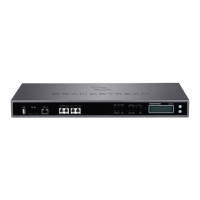
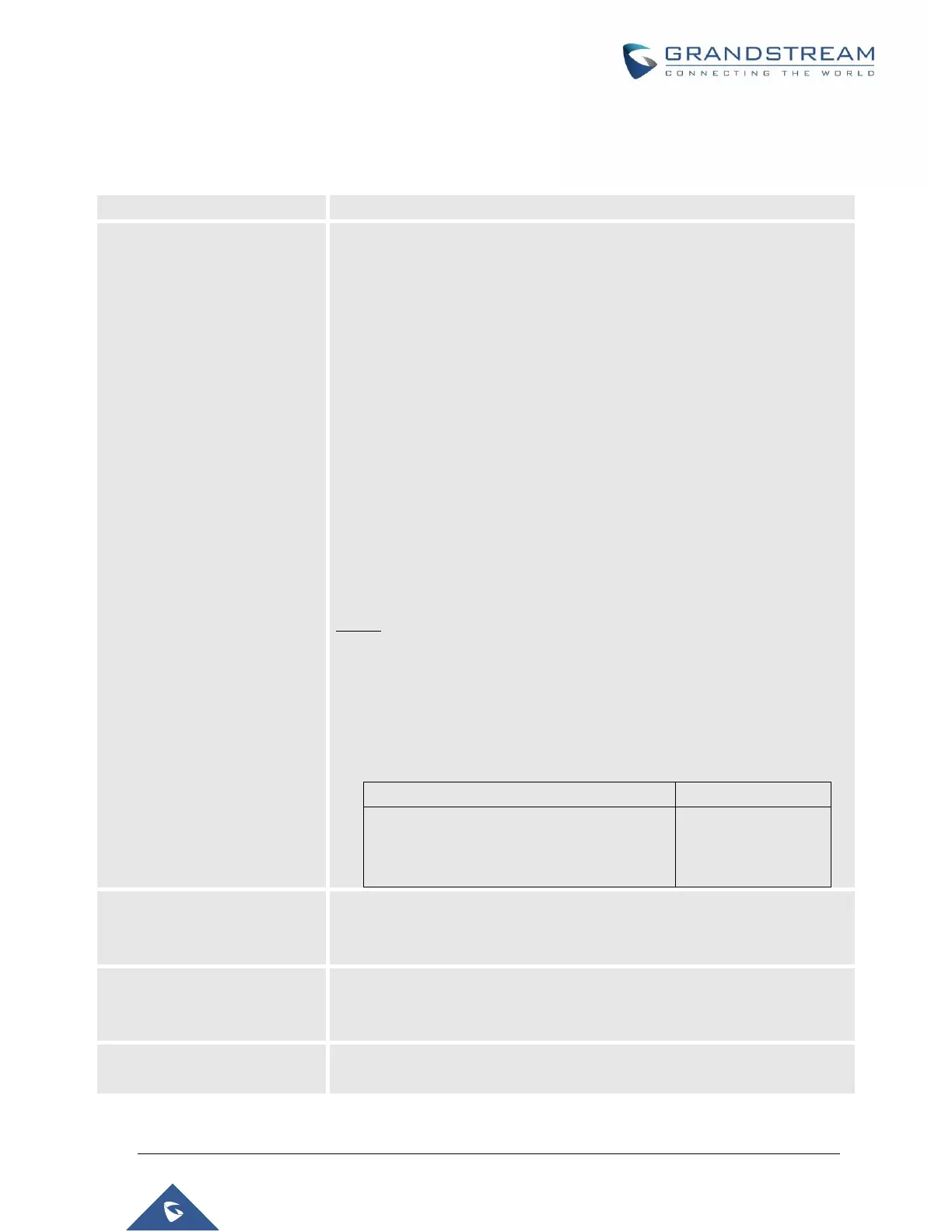